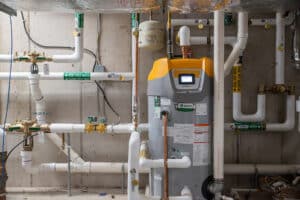The design-build method of project delivery creates innovative solutions in the fluidity and cost effectiveness of large construction projects. This same model of implementation is becoming increasingly important in the world of New York infrastructure projects where saving time and money can have a critical impact on the state’s budgets and populations.
The design-build premise was initially passed in 2011 in New York as part of Governor Andrew Cuomo’s tax and jobs creation bill. Since that time the state has already saved money with projects coming in at or under completion timetables. As we all know, the term “over-budget” is far too commonly associated with building projects, so this is good to see. In New York City, the current design-build application to the Tappan Zee Bridge project shows a $1.1 billion savings with the completion date moved up 18 months earlier than projected. Will New York State have what it takes to bring in more of these massive projects under the design-build umbrella?
Shifting the construction paradigm from lowest bid to overall value
Those in the construction industry are well aware of the traditional design-bid-build method of project execution. The bidding portion of the project is popular, and sometimes mandatory, in the public sector in determining the winning company due to lowest cost. The responsibilities for project execution are then firmly delineated for the owner, designer, and contractor. The lines are clear and the relationships well-defined.
However, there is usually room for improvement in any venture and the concept of design-build rose to the top for its ability to reduce costs both in design and construction, as well as dramatically improve completion dates. Most states now allow full or limited utilization of design-build project initiatives. Federal agencies have also altered their procurement rules, making room for design-build efficiencies.
While cost is always a factor, the design-build paradigm allows for selection based on value for the project as a whole. The old adage of “getting what you pay for” certainly applies in these types of projects. The new way of looking at the entire project, not just line items, allows for overall cost efficiencies for the long-term, and not just to secure a project based on low bidding.
Legislation hold-ups and quality concerns throw up roadblocks to design-build
So why don’t all New York infrastructure projects get the design-build seal of approval? The legislation is a major reason. Governor Cuomo has proposed new legislation allowing for the expansion of design-build in New York which lines the state up favorably in the event of competition for federal funding.
“I think it is critical, particularly as President Trump is talking about a trillion-dollar infrastructure program that is going to rely heavily on public-private partnerships and efficient construction,” said Kathryn Wylde, president of the Partnership for New York City, a nonprofit business advocacy organization.
Design-build would implement the single-bid process for engineering and construction work, bringing projects in on time and on budget. But unfortunately, the legislation wouldn’t expand into the procurement process for New York City agencies and that means taxpayers will spend billions more than necessary. State agencies enjoy these benefits but they have not been extended to those in New York City as of yet. “I still have to use traditional design-bid-build which, frankly, will add years to the project and tens of millions, if not hundreds of millions, of dollars,” said DOT Commissioner Polly Trottenberg. “It just makes no sense.”
The impediment to progress doesn’t seem to sit well with Governor Cuomo however. “The governor is a strong supporter of design-build, which has successfully delivered large-scale infrastructure projects, saving time on project completion and taxpayer money,” a Cuomo spokesman said in a statement. “In the past there has been resistance to the expansion of design-build statewide, but we look forward to discussing it during the budget process.”
There are those outside government who oppose design-build due to its possible negative impact on public health, safety, and welfare. The New York State Society of Professional Engineers opposes the new legislation because of its lack of quality assurance guidelines. Their particular concern is that quality standards are not legislated based on quality, inspections and oversight parameters determined by design professionals in the employ of the project owner. There is also concern that design professionals will be selected based on a low bid and not based on quality selection procedures.
Clearly, the discussion is not over but with so much infrastructure work to be accomplished, it seems critical that the legislation extends its efficiencies to reduce billion-dollar price tags and years-long timetables. As exhibited on the state level, design-build is a remarkable delivery initiative for New York; and while it may not be applicable to every project, there are demonstrable benefits to the process that need to be explored.
In Summary, Why Design-Build?
VIP Structures has been delivering projects using the design-build method for over 40 years. We offer this integrated approach to our clients for the benefits it provides in the areas of collaboration, minimized stakeholder risk, ownership methodologies, and overall development perspectives. Design-build projects offer several advantages over choosing individual firms for separate portions of a building project. These type of integrated design-build projects create better communication across teams and companies, and create long-term visions to streamline efficiencies.
Questions about how VIP Structures can help your project? Contact us below.



